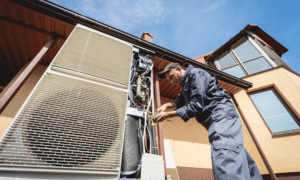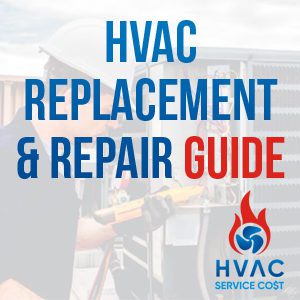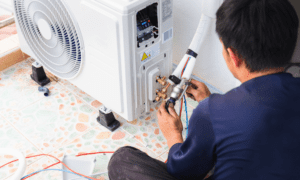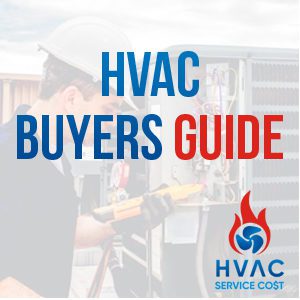
What HVAC Contractors Wish Homeowners Knew Before Replacing a Unit
I’ve been working in this industry for over 20 years, and I’ve seen just about every type of heating and cooling system you can imagine. From outdated, oversized units struggling to keep up with Florida’s humidity to sleek, smart systems that cut energy bills in half—I’ve installed, repaired, and replaced them all.
But here’s what I can tell you without hesitation: most homeowners aren’t given the full picture before they replace their HVAC unit.
I’m Allen Chambers, a licensed HVAC contractor and master electrician. I own a successful HVAC company here in Florida and contribute regularly to HVAC Service Cost to help homeowners make smarter decisions. If you’re considering a system replacement, this post is for you.
Replacing a Unit Isn’t Always a Straight Swap
A common misconception is that replacing your HVAC unit is as simple as removing the old one and installing a new version of the same thing. But that’s a mistake—especially if your old unit wasn’t sized properly or your home has changed since the last install.
Your home’s insulation, square footage, number of occupants, and even appliance usage all impact how much heating and cooling you actually need. If you just swap in another 3.5-ton system without reassessing your load needs, you could end up overpaying for equipment that doesn’t match your space—or worse, still experiencing uneven temperatures.
Bigger Is Not Always Better
Homeowners often think a bigger unit means better comfort. In reality, an oversized unit will short-cycle, turning on and off too quickly. That leads to:
-
Poor humidity control (especially here in Florida)
-
Higher utility bills
-
Faster wear and tear on your equipment
I always run a full Manual J load calculation before recommending a unit. If your contractor doesn’t, that’s a red flag.

You Might Need More Than Just a New Unit
This is the part most salespeople leave out: replacing the system often exposes other issues that need attention.
That could include:
-
Leaky ductwork
-
Poor airflow due to undersized returns
-
Outdated thermostats that limit energy efficiency
-
Electrical panel upgrades for high-efficiency systems
Ignoring these areas during a replacement is like putting new tires on a car with a busted alignment. The system won’t work as well as it could, and you’ll likely face new problems down the line.
Energy Efficiency Ratings Matter (But So Does the Installer)
I love talking about SEER ratings and energy savings—but here’s the truth: a 17 SEER system won’t perform like a 17 SEER system if it’s installed poorly. Your HVAC’s efficiency depends just as much on the workmanship as it does on the brand or model.
That’s why I tell homeowners not to fixate only on the equipment. Ask questions like:
-
How will you verify proper airflow?
-
Will you check refrigerant charge with digital gauges?
-
Are your techs NATE-certified?
When the installation is sloppy, efficiency drops, and your investment suffers.
Smart Features Are Worth Considering
If you’re already upgrading, it’s the perfect time to add smart HVAC controls. A Wi-Fi thermostat, zoning system, or even ductless mini-splits in certain rooms can completely change your home’s comfort level and lower your bills.
I’ve had clients cut their cooling costs by 20–30% just by installing variable-speed systems paired with zoning and a programmable thermostat.
You Don’t Have to Buy the Most Expensive Unit
A lot of homeowners assume that “better” always means “more expensive,” but there’s a sweet spot. I’ve worked with families where a mid-efficiency, single-stage system made more sense than an ultra-high-end unit they’d never use to full capacity.
Your lifestyle, home layout, and budget should guide your purchase—not just the SEER rating or brand name.

What You Really Pay For in an HVAC Replacement
When you get a quote, know this: you’re not just paying for a new piece of equipment. You’re paying for:
-
Proper sizing
-
Quality workmanship
-
Code-compliant installation
-
Warranties and service guarantees
-
Long-term reliability
That’s why it’s worth comparing multiple quotes from licensed HVAC professionals—people who care about doing it right the first time.
How to Choose the Right HVAC Unit for Your Home
Choosing a new HVAC unit isn’t something you should rush through—especially if you want to get the best performance and value out of your investment. Over the years, I’ve helped hundreds of homeowners find the right system for their home, and the one thing I always stress is this: the right unit isn’t always the biggest or the most expensive—it’s the one that fits your home’s actual needs.
Here’s what I tell every client to consider before making a final decision:
Understand SEER Ratings (But Don’t Obsess Over Them)
SEER stands for Seasonal Energy Efficiency Ratio. The higher the SEER rating, the more energy-efficient the system—at least in theory. But remember, a high-SEER unit only performs as advertised when installed correctly. A mid-range SEER unit that’s installed right will outperform a high-SEER unit that’s oversized or poorly set up.
In Florida’s climate, I often recommend units in the 15–18 SEER range for most families. It gives a great balance of efficiency, reliability, and return on investment.
Consider Your Comfort Priorities
Do you want ultra-quiet operation? Better humidity control? Consistent temperatures from room to room? Those needs point you toward different system types—like variable-speed compressors or two-stage units.
If you’ve struggled with hot spots, poor airflow, or humidity issues in the past, now’s the time to fix them—not after you’ve spent thousands on a replacement.
Don’t Overlook the Brand and Warranty
There are a lot of good brands out there—Trane, Carrier, Lennox, Rheem—and each has its strengths. What matters more is choosing a brand that offers:
-
A solid parts and compressor warranty (10 years is typical)
-
Readily available replacement parts
-
A strong reputation for support in your region
And just as important: make sure the contractor you hire is authorized to install and service the brand you choose. That ensures your warranty stays intact.

Match the System to Your Home’s Layout
If your home has multiple floors, finished attic spaces, or additions, a traditional single-zone system may not be the best fit. Zoned HVAC systems or ductless mini-splits might be a better match for comfort and energy savings.
I’ve seen homeowners save thousands in the long run simply by choosing a system that matches their home’s actual layout instead of just replacing what was there before.
Get Informed Before You Replace
Too many homeowners treat HVAC replacement like a routine upgrade. It’s not. It’s a chance to improve your comfort, lower your energy costs, and make your home more efficient—if you have the right team guiding you.
Take the time to ask questions. Get multiple quotes. And don’t be afraid to dig into the details. The right contractor won’t rush you—they’ll walk you through everything and help you understand your options.
About the Author
Allen Chambers is a master electrician and licensed HVAC contractor with over 20 years of experience. He specializes in energy-efficient installations, smart HVAC technology, and high-performance home solutions. Allen is the owner of a leading HVAC company in Florida and a contributing writer for HVAC Service Cost, where he helps homeowners make smart, cost-effective decisions about heating, cooling, and energy use.




Leave a Reply